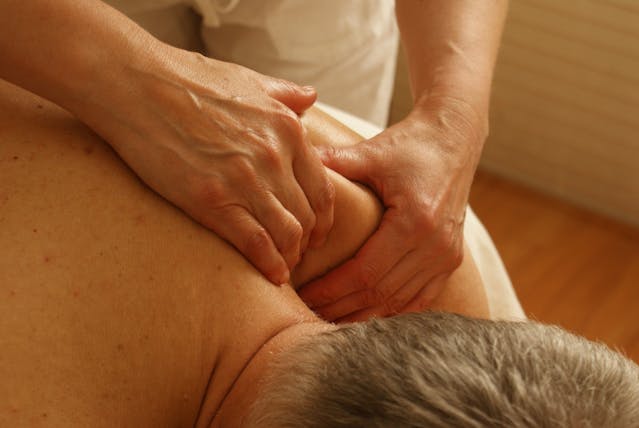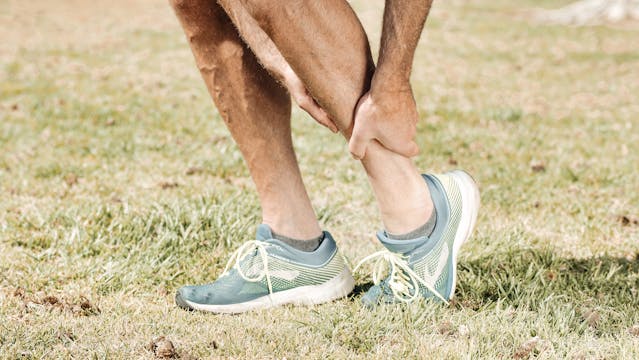Our body is made up of different parts. Each of these parts has multiple other parts attached to it. These work together and helps the human body to do it’s tasks. For example, the bones have various muscles, tendons, and nerves attached to them. Sometimes these delicate parts may be affected by injury or old age, resulting in pain, inflammation, and loss of ability. Tendonitis is a condition that can be chronic or acute. If treated early, it may heal quickly. Chronic condition can take some amount of time to heal completely.
Tendonitis
Tendonitis is a condition that affects the tendons. Tendons are tissues that connect muscles to bones. They help in movement and act as a shield to absorb the impact of injury to the muscle. They are composed of collagen fibers. Sometimes, due to injury, these tendons become inflamed. When this happens, there is pain and a lack of range of motion. This makes performing daily tasks very difficult and can significantly impact quality of life. The affected area can also swell and become red, with tenderness to the touch.
Causes of Tendonitis
There are many different causes of tendonitis. One of the most common causes is repeated motion. This can be anything, such as running or intense workouts. In addition, strain due to a sudden increase in the intensity of physical activity can contribute to this condition. Tendonitis is commonly seen in individuals involved in sports. Other causes include aging, as tendons weaken with age, injury to the tendon, and conditions like osteoarthritis. All of these can result in tendonitis. Regardless of the cause, the symptoms are typically very similar. Tendonitis generally occurs in the Achilles tendon, shoulder, and elbow, but it can also affect other areas, such as the wrist and thumb. The symptoms, while similar, can vary in intensity if tendonitis affects a sensitive area of the body. Areas used more frequently, such as the shoulders, may develop more pain compared to areas like the fingers.


Symptoms
Tendonitis can be a very painful condition. The most common symptom is pain whenever the affected part is moved. This pain can be quite severe with movement. In addition to pain, there is tenderness. Swelling is also seen around the affected area. This pain reduces the range of motion, resulting in difficulty performing normal tasks. Over time, not being able to use the affected area often leads to weakness.
Physiotherapy for Tendonitis
Physiotherapy can greatly help in treating tendonitis. The main aim of physiotherapy for this condition is to reduce pain and inflammation. Once the pain is decreased, exercises are introduced to improve the range of motion in the affected area. Depending on the condition, a therapist may also recommend immobilization for the first few weeks before starting the treatment. This is often necessary when the condition is in an acute phase.
Immobilization
Immobilization is necessary because tendons need time to recover. Immobilization allows the area to rest and tissues to heal. For exercises to be fully effective, the tendon must heal to a certain extent. Immobilization can be achieved through bandaging or taping, which helps keep the affected part in a fixed position. Once the condition improves, treatment can progress. Additionally, certain exercises such as stretching, rotation, flexion, and extension are introduced. These help with strength training and improve the range of motion in the affected region.


Electrotherapy for Tendonitis
Electrotherapy is an essential part of physiotherapy. It is used to heal tissues and muscle fibers at a deeper level. Ultrasound and laser therapy are commonly used to treat tendonitis. Cryotherapy and heating are also used depending on the condition and its stage. Electrotherapy is given alongside exercises to enhance their effectiveness and provide relief. It is necessary to seek physiotherapy early on; otherwise, the condition may worsen and require more time to heal.
Precautions
For anyone suffering from tendonitis, precautions are as important as the treatment itself. First, it is necessary to visit a health practitioner as soon as symptoms appear. Once treatment begins, it is essential to be aware of what to do and what to avoid. Unnecessary movement should also be avoided. When it comes to prevention, tendonitis is often caused by overuse of the tendon. It is not recommended to push the body’s limits without giving it necessary rest between physical activities like working out or sports. This is important for heavy activities such as heavy weight training.


Tendonitis is a common issue that many people suffer from. ThNs condition can be treated by a physiotherapist. It is a condition involving inflammation in tendons, such as those in the shoulders and elbows. This condition can be quite painful for the patient. If ignored, it can become difficult to heal quickly. Most of the time, physiotherapists work with orthopedic doctors to treat this condition. The treatment duration depends on the severity and the individual’s response to therapy. Some people respond very positively to treatment. Mild tendonitis can heal in a few weeks, while more severe cases may take several months to heal completely. It is important to be consistent with the treatment and follow all the exercises.










